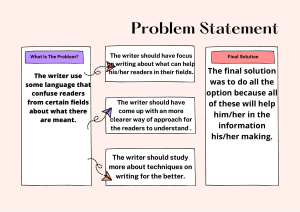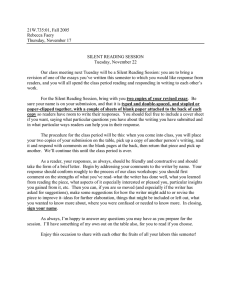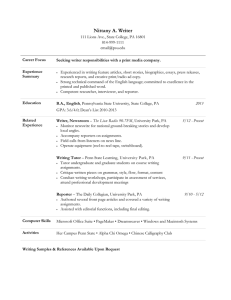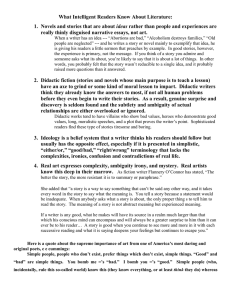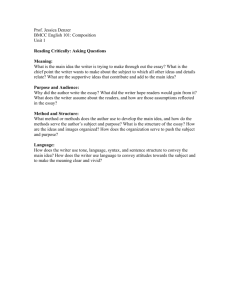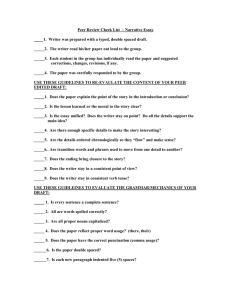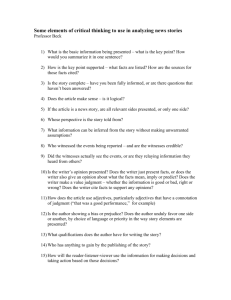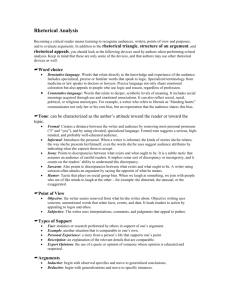10 Elements of News
advertisement
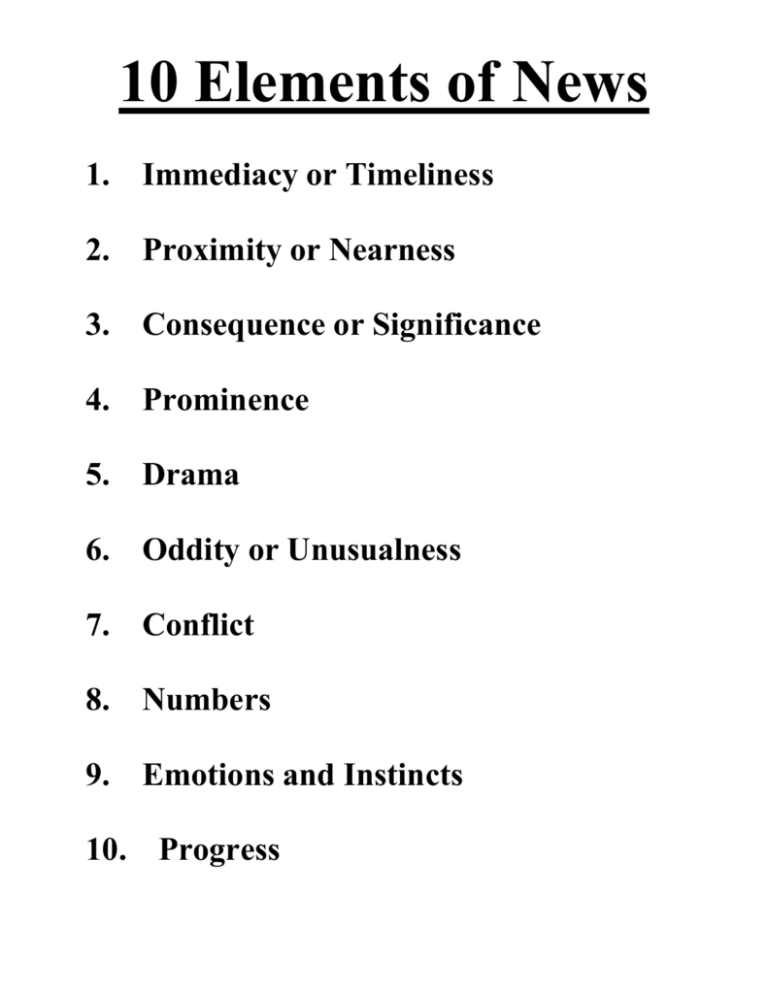
10 Elements of News 1. Immediacy or Timeliness 2. Proximity or Nearness 3. Consequence or Significance 4. Prominence 5. Drama 6. Oddity or Unusualness 7. Conflict 8. Numbers 9. Emotions and Instincts 10. Progress News Stories: Writing a news story, as the term suggests, consists in the main of conveying the news in as direct a manner as possible, without leaving any important fact. The most efficient way of doing this is to use the ‘inverted pyramid’ – meaning that the reporter begins by dealing with the 5 W’s and 1 H of the story, in the order of its importance. The main information at the beginning of the article means people ca get the basic idea of the news at a quick glance. It’s a fairly straightforward way of conveying news, and is therefore universally popular. While there can be no single rule, generally speaking, events that are important to your readers and need to be conveyed as quickly as possible constitute news stories. In a news article, FACTS are the MOST IMPORTANT thing News articles are relatively smaller – the average is 250 words (300 for professional papers.) The opening paragraph, or LEAD, has to be crisp and to the point. Likewise, the sentences that follow cannot be long-winded. A news article GETS IN,GETS OUT, AND GETS DONE. The news article is therefore a concise style; with emphasis on the importance of the content rather than form. The biggest challenge of writing a news story is to get all the important facts and supporting data within limited time. The ‘deadline’ hovers like a sword over the heads of news reporters, especially if a big story breaks out late at night. To contrast with this we have a feature story. The feature writer has some advantages over the news writer. He has more time to write, and he is allowed more words. Since space isn’t as much a constraint as it is for the news reporter, he can take liberties with ideas and form. A features article is a GOOD STORY TOLD WELL. But that doesn’t mean his task is any less challenging. He must write an interesting story. A feature is less likely to be read because it is usually relegated to special pages, away from Page 1; and readers are less likely to have patience with it. Although facts are important, dryly stating them won’t do. A feature writer, therefore, must become a craftsman, using his material in ways that catch the attention of readers. There are unlimited ways of doing this. The LEAD is as important to the feature writer as it is to the news reporter – as the fisherman employs bait with his hook, the feature writer must tempt the reader with his LEAD.
